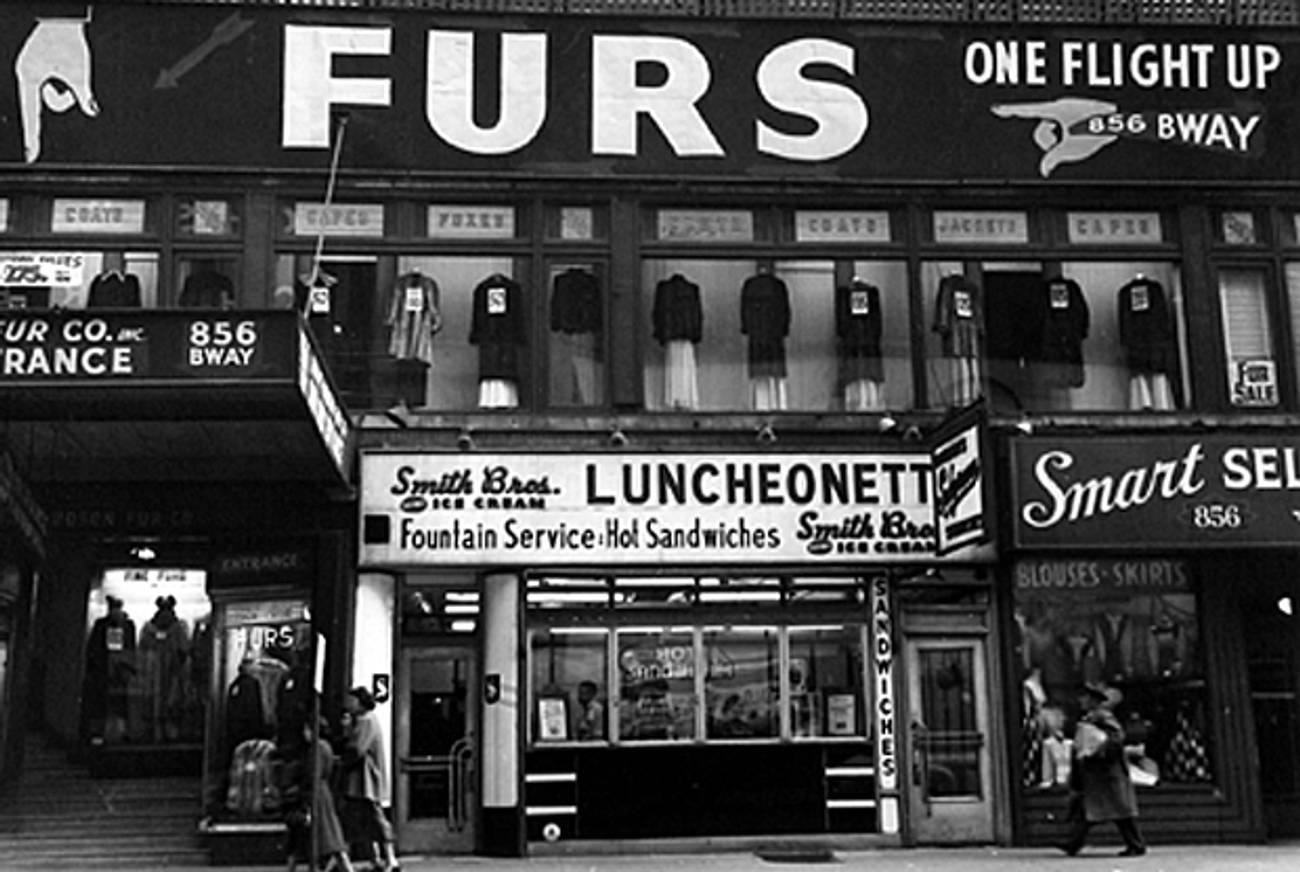Remembering Photographer Rebecca Lepkoff
New York City native chronicled the captivating, everyday world around her




Rebecca Lepkoff was a modern dance student and 23-year-old recent City College graduate when she decided to earn a few extra bucks by dancing at the 1939 New York World’s Fair. She scraped together the money she earned and bought her first camera—a second-hand Voigtlander—and immediately took to the streets of her native city to document the lives of fellow New Yorkers, a lifelong project that resulted in one of the more intimate and personal photographic records of New York’s Lower East Side produced in the last century. Lepkoff died last weekend, a few days after her 98th birthday.
The daughter of Russian Jewish immigrants, Lepkoff grew up in a tenement on Hester Street. Her father was a tailor and the family bounced around various Lower East Side addresses as they struggled to improve their circumstances. She got married in 1941, settling in a nearby tenement on Cherry Street, where she had three children and focused her lens on the world she inhabited, knew, and loved, documenting the ordinary denizens of the city.
Lepkoff developed her eye under the tutelage of Arnold Eagle, the first of many idealistic Jewish photographers—including Sid Grossman, Paul Strand, and Walter Rosenblum—who introduced her to the Photo League and encouraged her to document the small triumphs, personal sorrows, and daily working life of her childhood stomping ground. Like so many left-leaning New York photographers who came of age during the Great Depression—many of them recent Jewish immigrants or first-generation Americans—Lepkoff soon found her classroom and home at the famed Photo League, where she encountered a large group of like-minded members who believed in the power of the documentary photograph.
Her images often reflected her background in dance and movement. Lepkoff was particularly attuned to the urban choreography, rapid movement, and spontaneity of New York’s bustling streets. She had an intuitive sense of figures in space, and she would put herself into the space, capturing the subtle choreography and thrumming commotion of New York at a time when the theater of daily, blue-collar life took place not in the small, cramped tenement dwellings but on the sidewalks, stoops, docks, fire escapes, storefronts, and rooftops. Children jumping over piles of wood and playing on the large pipes near the docks, gleefully leaping from stoops, hanging over the edges of fire escapes, weaving through the tangled laundry lines, and navigating the crowds on the sidewalks often had the appearance of a choreographed urban ballet when framed by her camera and astute sense of composition.
Legendary photography curator and Photo League expert Anne Tucker, upon learning of Lepkoff’s death, lamented, “She was just a lovely person and a damn good photographer. There are not many Photo League people left. She had a real sense of the city, of the people in the architecture in the city, in the hard, often dark spaces of the city. She did not photograph down-and-outers, she photographed the working people, and she had a terrific sense of light. She was just a lovely human being and it all came through in her work.”
In the 1940s and 50s, when Lepkoff hit her stride as a photographer, successive waves of immigrants and shifting demographics, including the large influx of Puerto Rican and African American immigrants, contributed to her intimate photographic portrayal of the changing inhabitants of the Lower East side. Leisure pursuits in the big city—pool halls, the shops on 14th street, Broadway, dance halls, and especially the escape of movies—were captured against the backdrop of tattered advertisements and decaying Hollywood posters, faded shop signs, abandoned lots, and crumbling building facades.
In one photograph, Lower East Side, 1947, a young boy lugs a large, used tire along a sidewalk in front of an abandoned lot adorned with a peeling, tattered billboard for the 1947 film about anti-Semitism in America, Gentleman’s Agreement, starring Gregory Peck and Dorothy McGuire. In another, Broken Window on South Street, 1948, the dark, dilapidated building and beautiful geometry of the broken window are juxtaposed with the feeling of an open city presenting limitless possibilities. On one side are cramped and squalid living conditions and on the other the expanse of sky and high rises stretching out and presenting a different view of the city, all in one shot.
Lepkoff has been included in numerous group exhibitions, as well as several thoughtful recent reappraisals of the Photo League, but a substantive monographic exhibition of her work is long overdue. With the recent emergence of the Lower East Side as a museum, gallery, and art incubation hub, here’s hoping a native daughter soon gets her due.
Maya Benton is International Center of Photography Consulting Curator and Curator of the Roman Vishniac Archive. Her book, Roman Vishniac will be published by Delpire/Actes Sud in September, 2014. The catalog, Roman Vishniac Rediscovered, will be published by ICP/Prestel/Delmonico in 2015. She is based in Paris.
Maya Benton is a curator at the International Center of Photography.